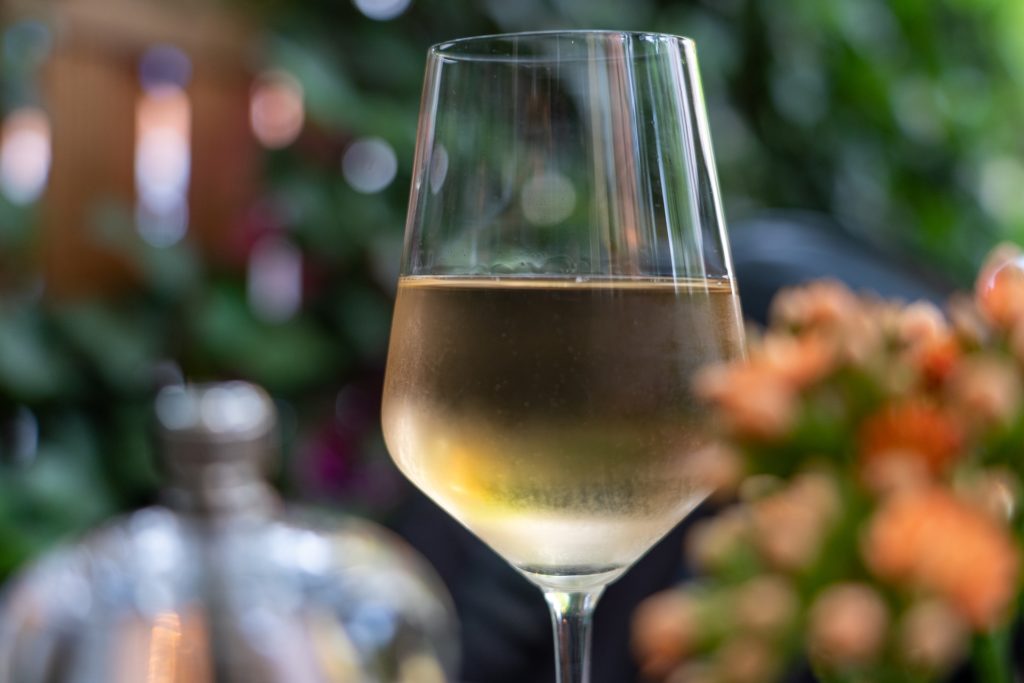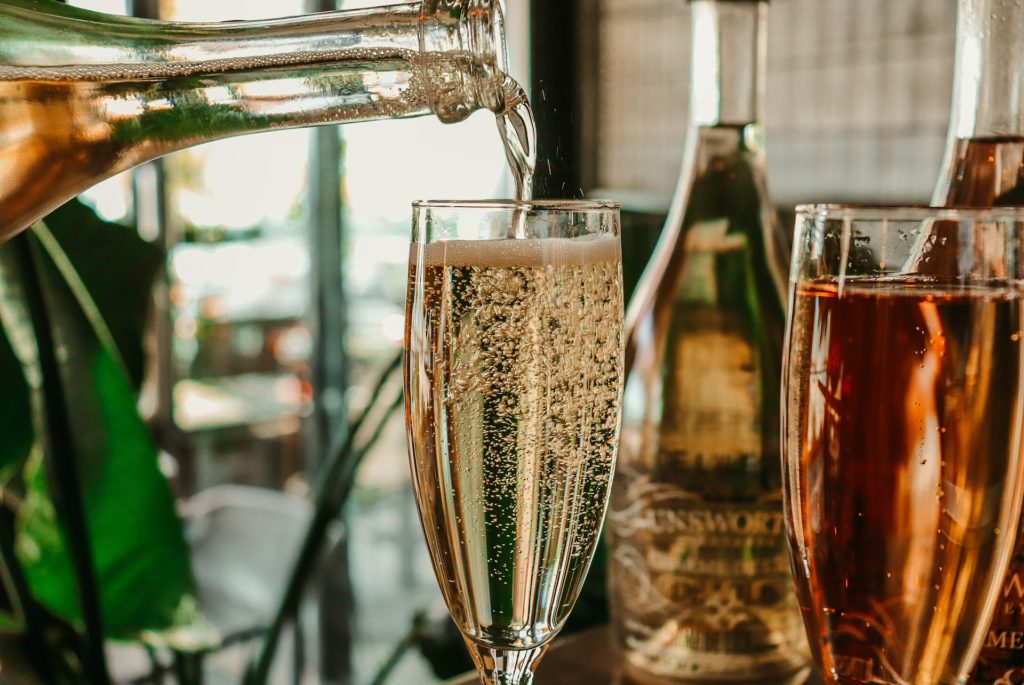The Ultimate Wine Sweetness Chart: The Sweet Scale
While every wine contains sugar, not all are considered sweet. Our wine sweetness chart will show a wide variety of wines on the sweeter side, while others are so low in sugar that they are labeled “bone dry.”
In this post, we’ll look at what makes a wine sweet in the first place and where your favorite wines lie on the sweetness scale.
Whether you prefer sweeter than sweet wines or so dry that they make your lips pucker, this chart will come in handy for better knowing your wine.
How Is Sweet Wine Different Than Dry Wines?
What makes a wine dry?
A wine must contain less than 1% residual sugar to be classified as dry. A wine with less than 0.5% residual sugar is considered ‘bone dry,’ implying that the residual sugar has been removed. This quantity of sugar is hardly detectable by your taste senses.
Conversely, sweet wine has a considerably greater residual sugar content of more than 20%.
What Are Sweet Wines?
Some wines are as dry as a bone, while others are as sweet as a can of soda. But how is this possible since all wine is produced by the fermentation of grape juice?
The solution can be found in the wine’s residual sugar. Residual sugar is a word used in the wine industry to describe the quantity of sugar remaining in a bottle of wine after it has been completed and is ready for consumption.
Grapes, as we know, have a high sugar content, which means that any wine, no matter how dry, has some naturally occurring sugars. However, winemakers add yeast during fermentation, which turns these natural sugars into ethanol or alcohol.
While yeast will convert the bulk of the grape sugar into alcohol, occasionally, the sugar content of the grapes is significantly higher, or winemakers choose to add additional sugar. This implies that the yeast cannot convert all the sugar to alcohol, resulting in a wine with a greater residual sugar content.
What Are Other Factors That Make A Wine Sweeter?
There are additional methods for producing sweeter wine. Among them are:
- Stopping the fermentation process early on purpose so that the yeast does not convert as much carbohydrates into alcohol.
- Choosing grapes with greater sugar content.
- Choosing “late harvest” grapes, which have been allowed to mature on the vine and become sweeter as a result.
- A sugar wine solution (a dose) is added between fermentations when making sparkling wine.
- Intentionally inoculating grapes with noble rot is a natural process that helps grapes to grow sweeter.
- The fortified wine Port is created by fermenting the wine with brandy.
- Using grapes frozen on the vine results in wine with undiluted natural sugars.
How To What’s Better: Dry On White Wine?
- Tannins: Tannins are the components of wine that include grape skin, stems, and seeds. To further comprehend tannin, it is the dry sensation felt when the protein in our saliva attaches to tannin. Several people have varied ideas about wine tannins. However, the more tannins there are, the drier the wine will be.
- Acidity: The acidity component of wine is frequently misidentified as tannin. Acidity is the flavor rather than what you feel in your tongue. Immature grapes have a high acidity level. More acidity makes the wine dry.
- Alcohol: As previously stated, alcohol is produced when sugar is fermented. This means that the longer
Also Read: Is Rosé Wine Sweet?
Sweetness Levels In Wine (Both Red & White)
Sweetness Level In White Wine
Technically, any white wine can be turned sweet, depending on when it was picked and how much sugar was added by the winemaker. As a result, you can only sometimes rely on the variety of wine to tell you how sweet it is.
- Riesling, for example, can either be sweet or dry. White wines that age nicely include Rieslings and Gewurztraminer. If you have aged your white wine, decant it before serving, just as you would a red wine.
How can I determine whether a wine is sweet or not?
- The sweetness level is frequently indicated on wine labels. The sweetness in a wine comes from residual sugar (RS), which is the sugar remaining in the wine after fermentation.
Semi-Sweet: RS 35-50 g/L
- Common flavors: Ripe tropical fruits and luscious melons
- Popular varietal: Moscato
RS sweet: RS 50-120 g/L
- Common flavors: Lemon curd, honey, candied fruit
- Popular varietal: White Port
Very Sweet: RS: 120-220 g/L
- Common flavors: Raisin, dried fig, and candied fruit
- Popular varietal: Ice Wine
Note:- Wines with the same amount of Residual Sugar or sweetness can taste dramatically different. Wines with less acidity taste sweeter than those with more acidity. White wines with higher acidity feature acidic citrus and tropical fruit tastes that balance out the sweetness.
Bone Dry: Less than 1 g/L RS
- Common flavor: Lemon and citrus fruits
- Popular varietal: Muscadet
Dry: RS 1-10 g/L
- Common flavor: Grapefruit, lemongrass, and other fruit and savory tastes.
- Common varietal: Sauvignon Blanc, Chenin Blanc, and Viognier.
Off-Dry: RS 11-35 g/L
- Common flavors: Honey, lemon curd, and melon.
- Popular varietals: Gewurztraminer and Riesling are two
Also Read: Moscato Vs Prosecco: Top 8 Differences [Fizz Faceoff]
Red Wine Sweetness Chart
A red wine sweetness chart has a lot of variety. Some red wines include as much as 20% residual sugar, while others have as little as 1%.
Very Sweet
- Tawny Port
- Ruby Port
- Vin Santo Rosso
Sweet
- Lambrusco
- Rosso Dolce
- Brachetto D’acqui
- Beaujolais Nouveau
Medium Sweet
- Zinfandel
- Garnacha (Grenache)
- Malbec
- Shiraz (Syrah grapes grown in Australia)
Dry
- Merlot
- Syrah (Shiraz grapes grown in France)
- Pinot Noir
- Sangiovese
Very Dry
- Chianti
- Cabernet Sauvignon
- Tempranillo
- Nebbiolo
- Tannat
Also Read: Pinot Grigio Vs Pinot Noir: The Ultimate Comparsions
Which Wine Tops The Chart For Sweetness?
Dessert wines fall under the first group. Sugary and indulgent alternatives like ruby Port, tawny Port, and Vin Santo Rosso from Italy are ideal for people with a sweet craving.
However, if you’re looking for a sweeter red wine to go with your main course, there are many options, such as Lambrusco. Lambrusco is a semi-sweet red wine produced in Italy. Red fruit tastes include strawberry, blackberry, and rhubarb. It also has a high acidity level, indicating that the wine’s residual sugars are well-balanced.
Another sweet red wine choice is Zinfandel. This juicy Croatian grape yields wines with fruity flavors reminiscent of canned peaches, strawberries, and sweet tobacco.
When To Drink A Sweet Wine?
Tawny and ruby Ports, which are very sweet red wines, are the ideal accompaniment to a delicious dessert. While Port’s rich, syrupy tastes can be too much for some, these sweet wines match perfectly with a rich chocolate torte or a typical Portuguese custard tart.
Medium sweet red wines like Zinfandel and Malbec are ideal for mixing with meaty dishes. They also age well because of their high sugar content, which means you might keep a decent bottle of Malbec or Zinfandel in your cellar for up to ten years!
These full-bodied wines have a high alcohol concentration (some are above 15% ABV), so keep track of how many glasses you consume.
Sparkling Wine Sweetness Level
Sparkling wines and Champagnes have different sweetness levels than white wines. Even the richest sparkling wines have far less residual sugar than still wines.
- Doux (the sweetest level of sparkling wine), for example, contains just about 50 g/L RS yet has the same sweet flavor as a very sweet white wine with 120-220 g/L RS. This has to do with the degrees of carbonation and acidity.
Sparkling Wines Sweetness Level
The terms on a bottle of sparkling wine that indicate its sweetness range from bone dry to extremely sweet are as follows.
- Brut: less than 12 grams of sugar per liter
- Extra brut: 0-6 grams of sugar per liter
- Dry sec: Sugar content per liter
- Demi-sec: 17-32 g Sugar content ranges between 32 and 50 grams per liter.
- Doux: Contains more than 50 grams of sugar per liter
Also Read: Unveiling Champagne Alcohol Content: What You Need to Know
Final Words
We hope you have broadened your wine knowledge regarding dry versus sweet wine. However, defining them was relatively easy. The main difficulty is obtaining the sugar content of wine, which is rarely indicated on the wine label.
You will only know what sort of wine you buy if the label says semi-dry, semi-sweet, or sweet/dessert wine. And remember, Sweeter wines are often called ice wine or late harvest.








